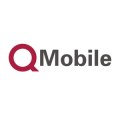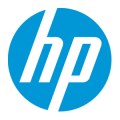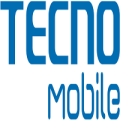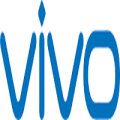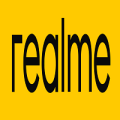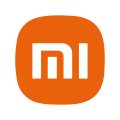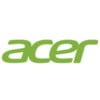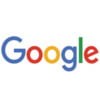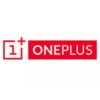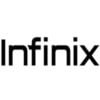- Awesome page
- Latest Mobile
- Smartphones
- Google Pixel 6
Google Pixel 6
Google Pixel 6 Price in Bangladesh
Google Pixel 6 price in Bangladesh is BDT 42,000. This smartphone is available in two variants: 128 GB of internal storage with 8 GB of RAM and 256 GB of internal storage, also with 8 GB of RAM. The Pixel 6 features a 4614 mAh battery with 30W fast charging capability. It runs on Android 12 and is powered by the Google Tensor chipset, built on a 5 nm process.
Specifications
General
| Model | Google Pixel 6 |
| Announced | 2021, October 19 |
| Released | 2021, October 28 |
| Status | Available |
| Unofficial price | 8GB 128GB ৳42,000 / 8GB 256GB ৳45,000 |
Design
| Dimensions | 158.6 x 74.8 x 8.9 mm (6.24 x 2.94 x 0.35 in) |
| Weight | 207 g (7.30 oz) |
| Colors |
Sorta Seafoam, Kinda Coral, Stormy Black |
Network
| Technology | GSM / CDMA / HSPA / EVDO / LTE / 5G |
| 2G Network |
GSM 850 / 900 / 1800 / 1900 CDMA 800 / 1700 / 1900 |
| 3G Network |
HSDPA 850 / 900 / 1700(AWS) / 1900 / 2100 CDMA2000 1xEV-DO |
| 4G Network |
1, 2, 3, 4, 5, 7, 8, 12, 13, 14, 17, 18, 19, 20, 25, 26, 28, 29, 30, 32, 38, 39, 40, 41, 42, 46, 48, 66, 71 |
| 5G Network |
1, 2, 3, 5, 7, 8, 12, 28, 41, 66, 71, 77, 78, 258, 260, 261 Sub6/mmWave - GD1YQ 1, 2, 3, 5, 7, 8, 12, 28, 41, 66, 71, 77, 78 Sub6 - GTT9Q |
| GPRS <strong>GPRS</strong> (General Packet Radio Service) is a packet oriented mobile data service on the 2G and 3G cellular communication system's global system for mobile communications (GSM), Generally, GPRS is used for the purpose of wireless data transfer, such as sharing pictures and videos or browsing the Internet via a mobile phone connection. | |
| EDGE <strong>EDGE</strong> (Enhanced Data GSM Environment) is a wireless network technology generally considered the next step in the 2G network offers data transfer rates up to four times faster than ordinary GSM networks, Generally, EDGE is used for the purpose of wireless data transfer, such as sharing pictures and videos or browsing the Internet via a mobile phone connection. | |
| Speed | HSPA 42.2/5.76 Mbps, LTE-A (CA), 5G |
Display
| Display Type <strong>Display Technology => </strong> A number of display technologies and types used in mobile phones => TFT (Thin Film Transistor), IPS (In-Place Switching), OLED (Organic Light Emitting Diode), AMOLED (Active-Matrix Organic Light-Emitting Diode), Super AMOLED (an even advanced version of AMOLED), Resistive Touchscreen (Resistive touchscreens contain two layer of conductive material with a very small gap between them which acts as a resistance), Capacitive Touchsceen (Capacitive touchscreen technology consists of a layer of glass coated with a transparent conductor) | AMOLED capacitive touchscreen, 16M colors |
| Size | 6.4 inches, 100.5 cm2 (~83.5% screen-to-body ratio) |
| Resolution | 1080 x 2340 pixels, 19.5:9 ratio (~403 ppi density) |
| Features |
Corning Gorilla Glass Victus 90Hz, HDR10+ Always-on display |
Camera
Main camera
| Camera Setup | Dual |
| Primary <strong>Camera</strong> is able to capture photographs and usually videos, The most important characteristics of a camera are the resolution (measured in megapixels), lens focus type (fixed or automatic), higher megapixel cameras are known to capture higher quality photos, but not always a good measurement of the photos quality. |
50 MP, f/1.9, 26mm (wide), 1/1.31&amp;quot;, 1.2µm, omnidirectional PDAF, Laser AF, OIS 12 MP, f/2.2, 114˚ (ultrawide), 1.25µm |
| Features |
Dual-LED flash, Pixel Shift, Auto-HDR, panorama |
| Video | 4K@30/60fps, 1080p@30/60/120/240fps; gyro-EIS |
Selfie camera
| Camera Setup | Single |
| Primary <strong>Camera</strong> is able to capture photographs and usually videos, The most important characteristics of a camera are the resolution (measured in megapixels), lens focus type (fixed or automatic), higher megapixel cameras are known to capture higher quality photos, but not always a good measurement of the photos quality. |
8 MP, f/2.0, 24mm (wide), 1.12µm |
| Features |
Auto-HDR |
| Video | 1080p@30fps |
Hardware
| Chipset <strong>Chipset</strong> is a group of integrated circuits designed to perform one or a more dedicated functions, often with real time computing constraints, Popular smartphones are equipped with more advanced embedded chipsets that can do many different tasks depending on their programming. | Google Tensor (5 nm) |
| CPU <strong>CPU</strong> (Central Processing Unit) mostly known as processors, CPU processes instructions in order to carry out certain functions that make your device operate properly. Processors are often described as the brain of computers, smartphones and tablets, Smartphones and tablets rely on processors to carry out their every task, Processors are an incredibly important factor in selecting any type of computing device, including your smartphone. | Octa-core (2x2.80 GHz Cortex-X1 & 2x2.25 GHz Cortex-A76 & 4x1.80 GHz Cortex-A55) |
| GPU <strong>GPU</strong> (Graphics Processing Unit) is a single-chip processor designed to rapidly manipulate and alter memory to accelerate the creation of images in a frame buffer intended for output to a display, This includes things such as lighting effects, object transformations, and 3D motion. | Mali-G78 MP20 |
| RAM (Memory) <strong>RAM</strong> (Random Access Memory) is a type of computer memory that can be accessed randomly, any byte of memory can be accessed without touching the preceding bytes that allows information to be stored and accessed quickly from random locations. RAM is the most common type of memory found in computer systems, smartphones, tablets and other electronic devices. | 8 GB |
| Internal Storage <strong>Internal Storage</strong> is a data storage space (flash memory) mostly used in smartphones, tablets and other electronic devices where operating system, apps, music, photos, videos, files and other user data Is stored. | 128/256 GB UFS 3.1 |
| Sensors <strong>Sensors</strong> are electronic components that detects and responds to some type of input from the physical environment. The specific input could be light, heat, motion, moisture, pressure and location, The output is generally a signal that is converted to use in computing systems, a location sensor, such as a GPS receiver is able to detect current location of your electronic device. |
Fingerprint (under display, optical), accelerometer, gyro, proximity, compass, barometer |
Connectivity
| Bluetooth <strong>Bluetooth</strong> is a wireless communications technology for exchanging data between mobile phones, headsets, computers and other network devices over short distances without wires, Bluetooth technology was primarily designed to support simple wireless networking of personal consumer devices. | 5.0, A2DP, LE, aptX HD |
| Infrared <strong>Infrared</strong> connectivity is an old wireless technology used to connect two electronic devices. It uses a beam of infrared light to transmit information and so requires direct line of sight and operates only at close range. | |
| USB | USB Type-C 3.1 |
| GPS <strong>GPS</strong> The Global Positioning System is a satellite-based radio navigation system, GPS permits users to determine their position, velocity and the time 24 hours a day, in all weather, anywhere in the world, In order to locate your position, your device or GPS receiver must have a clear view of the sky. | Yes, with A-GPS, GLONASS, GALILEO, QZSS |
| NFC <strong>NFC</strong> (Near field communication) is a set of standards for smartphones and similar devices to establish peer-to-peer radio communications with each other by touching them together or bringing them into proximity, usually no more than a few inches. |
Battery
| Battery Type <strong>Battery Type => </strong> Cell phones run on various kinds of batteries depending on the manufacturer, phone size or shape and features. There are basically four types of cell phone batteries => Lithium Polymer, Lithium Ion, Nickel Metal Hydride and Nickel Cadmium. | Non-Removable Li-Po |
| Capacity <strong>Battery Capacity</strong> is a measure (typically in Amp-hr) of the charge stored by the battery, and is determined by the mass of active material contained in the battery. The battery capacity represents the maximum amount of energy that can be extracted from the battery under certain conditions. | 4614 mAh |
| Charging Charging | Fast charging 30W, 50% in 30 min (advertised) Fast wireless charging 21W Reverse wireless charging USB Power Delivery 3.0 |
Google Pixel 6 Review: The New Standard for Smartphones
Introduction
Are you ready to explore the future of smartphones? The Google Pixel 6 has arrived, and it’s making waves in the tech world. This blog post dives deep into everything you need to know about the Pixel 6, from its sleek design to its powerhouse performance. Whether you’re a tech enthusiast, a smartphone user, or a gadget reviewer, this comprehensive review will give you valuable insights into Google’s latest flagship. Let’s get started!
Design and Build Quality
First impressions matter, and the Google Pixel 6 doesn’t disappoint. The device boasts a modern and sophisticated design that stands out in a crowded market. Crafted with high-quality materials, the Pixel 6 feels solid and premium in hand. The glossy glass back and aluminum frame not only add to its aesthetic appeal but also ensure durability.
One of the most striking features is the unique camera bar that spans the width of the phone’s back. This design choice not only sets it apart visually but also balances the device when laid flat. The bold color options, including Stormy Black, Sorta Seafoam, and Kinda Coral, cater to different tastes, making it a stylish accessory as well as a powerful tool.
In terms of ergonomics, the Pixel 6 fits comfortably in hand, thanks to its rounded edges and balanced weight distribution. It’s not too heavy, nor too light—it’s just right. The placement of buttons and ports is intuitive, allowing easy access without fumbling. Overall, the Pixel 6 excels in design and build quality, making it a joy to use daily.
Camera Performance
Google’s Pixel lineup has always been synonymous with exceptional camera performance, and the Pixel 6 carries on this legacy proudly. Equipped with a 50MP main sensor and a 12MP ultra-wide lens, the Pixel 6 captures stunning photos and videos in various lighting conditions. The enhanced Night Sight mode ensures your low-light shots are crisp and detailed, while the dedicated astrophotography mode lets you capture the beauty of the night sky with ease.
One of the standout features is the Magic Eraser, which allows you to remove unwanted objects from your photos seamlessly. This AI-driven tool is perfect for cleaning up photobombs or distractions, leaving you with a polished final image. Additionally, the Real Tone feature ensures accurate skin tones in portraits, celebrating diversity in photography.
Video recording on the Pixel 6 is equally impressive, with 4K resolution at 60fps and advanced stabilization for smooth footage. Whether you’re capturing a family gathering or a scenic landscape, the Pixel 6’s camera delivers exceptional results. For selfie enthusiasts, the 8MP front camera, equipped with Google’s signature software enhancements, ensures you look your best in every shot.
Display and Performance
The Google Pixel 6 features a vibrant 6.4-inch AMOLED display with a resolution of 2400×1080 pixels, offering an immersive viewing experience. The screen supports a 90Hz refresh rate, providing smooth scrolling and fluid animations. Whether you’re streaming your favorite show or playing an intense game, the Pixel 6’s display brings content to life with rich colors and deep blacks.
Under the hood, the Pixel 6 is powered by Google’s custom Tensor chip, designed specifically for AI and machine learning tasks. This chip, combined with 8GB of RAM, ensures seamless performance in everyday use and while multitasking. Apps launch quickly, and there’s no noticeable lag, even with resource-intensive tasks.
Gaming on the Pixel 6 is a delight, thanks to the powerful GPU and responsive touch controls. Popular titles like Call of Duty Mobile and Asphalt 9 run smoothly, with graphics rendered beautifully on the AMOLED screen. The combination of high performance and a stunning display makes the Pixel 6 a versatile device for both work and play.
Battery Life and Charging
Battery life is a crucial factor for any smartphone user, and the Pixel 6 delivers in this department. The device houses a 4,614mAh battery, which easily lasts a full day of moderate to heavy use. Whether you’re browsing the web, streaming videos, or navigating with Google Maps, the Pixel 6 keeps up with your needs without frequent charging.
When it’s time to recharge, the Pixel 6 supports 30W fast charging, getting you back to full power in no time. Additionally, the device offers 21W wireless charging and reverse wireless charging, allowing you to share power with other compatible devices. Battery optimizations in Android 12 further enhance efficiency, ensuring you get the most out of every charge.
The adaptive battery feature learns your usage patterns and prioritizes power for the apps you use most. This intelligent management helps extend battery life, making the Pixel 6 a reliable companion for your daily adventures. Overall, the combination of long battery life and fast charging capabilities makes the Pixel 6 a standout performer in its class.
Software and User Experience
The Google Pixel 6 is among the first devices to run Android 12, bringing a host of new features and improvements. The Material You design language offers a fresh and personalized look, with dynamic theming that adapts to your wallpaper. This creates a cohesive and visually appealing interface, making navigation a pleasure.
One of the key highlights is the improved privacy controls, giving you more transparency and control over your data. The Privacy Dashboard provides a comprehensive view of app permissions, while indicators alert you when the microphone or camera is in use. These enhancements ensure a safer and more secure user experience.
Exclusive to the Pixel 6 are features like Live Translate, which offers real-time translation of text and speech in multiple languages. This is a game-changer for travelers and multilingual users, breaking down language barriers effortlessly. The Call Screen feature, powered by Google Assistant, helps you manage spam calls and understand the context before answering.
Price and Value
When it comes to value for money, the Google Pixel 6 stands out as an excellent choice. Priced competitively, it offers flagship-level features and performance at a more accessible price point. Compared to other high-end smartphones in the market, the Pixel 6 provides substantial savings without compromising on quality.
In addition to the hardware, the Pixel 6 benefits from Google’s commitment to software updates and security patches. This ensures you get the latest features and improvements for years to come, enhancing the overall value of the device. Subscribers also enjoy exclusive deals and early access to new features, adding to the appeal.
For tech enthusiasts and smartphone users looking for a device that balances performance, innovation, and affordability, the Pixel 6 is a compelling option. It delivers a premium experience at a reasonable price, making it a smart investment for anyone in the market for a new smartphone.
Conclusion
In summary, the Google Pixel 6 sets a new standard for smartphones, combining cutting-edge technology with thoughtful design. Its stunning camera performance, vibrant display, and robust battery life make it a versatile choice for a wide range of users. The seamless integration of hardware and software, powered by Google’s custom Tensor chip, ensures a top-tier experience.
For tech enthusiasts, the Pixel 6 offers a glimpse into the future of mobile technology, with innovative features and AI-driven enhancements. Smartphone users will appreciate the intuitive interface and practical benefits, while gadget reviewers will find plenty to admire in its comprehensive feature set. If you’re considering a new smartphone, the Google Pixel 6 deserves a spot at the top of your list.
Ready to experience the future of smartphones? Discover the Google Pixel 6 and see how it can elevate your mobile experience.







